When it comes to smooth skin, body scrub is a granular skincare product designed to slough off dead skin cells and boost circulation. The big question many ask is whether to apply it on wet skin skin that has been moistened with water or on dry skin skin that is still bare of moisture. This guide breaks down the science, benefits, and step‑by‑step tips so you can decide which technique suits your routine.
Understanding the Basics of Body Scrub Use
Origins and History
Exfoliation dates back to ancient Egypt, where women used ground almond shells mixed with oil to polish their bodies. In modern spas, exfoliation the process of removing dead skin cells is a staple treatment, and the body scrub has become its most accessible form.
Core Principles or Components
At its core, a body scrub combines exfoliant particles tiny granules such as sugar, salt, coffee grounds, or jojoba beads with a carrier medium-often oils or creamy bases. The particles create friction that lifts away dead skin cells the outermost layer of skin that can accumulate and look dull, while the oils provide moisturizing hydrating benefits that keep skin supple after scrubbing.
How It Differs from Related Practices
Unlike chemical exfoliants (e.g., AHAs, BHAs) that dissolve bonds between cells, a scrub relies on physical abrasion. It also contrasts with dry brushing, where a stiff brush is used on completely dry skin without a product. Below is a quick comparison.
| Method | Key Feature | Primary Benefit |
|---|---|---|
| Body Scrub | Granular particles in a cream or oil base | Immediate smoothness + hydration |
| Chemical Exfoliant | Acidic compounds (AHA/BHA) | Cell turnover over days, suitable for acne |
| Dry Brushing | Firm brush on completely dry skin | Circulation boost, lymphatic support |
Who Can Benefit from a Body Scrub?
Anyone looking for smoother skin can enjoy a scrub, but certain groups see extra upside: athletes needing quick post‑workout recovery, people with rough elbows or knees, and those who simply love a spa‑like ritual at home. If you have very sensitive skin, opt for ultra‑fine particles or a sugar‑based formula to avoid micro‑tears.
Benefits of Using a Body Scrub
Enhanced Skin Texture
Physical exfoliation removes the flaky layer that traps dead cells, revealing the softer, newer layer underneath. Dermatologists note that regular scrubbing improves skin’s ability to reflect light, making it appear more radiant.
Improved Circulation
The massaging motion of a scrub stimulates blood flow, which can help deliver nutrients and oxygen to skin cells. This gentle boost often leaves the skin with a subtle pink glow-especially noticeable after a warm shower.
Better Product Absorption
When dead skin is cleared away, moisturizers, serums, and even sunscreen sink in more efficiently. Think of it as clearing a driveway before parking-nothing gets stuck.
Stress‑Relief and Mindfulness
The rhythmic action of rubbing a scented scrub can be surprisingly soothing. Aromas like lavender or citrus turn the routine into a mini‑spa, easing tension and promoting a calm mindset.
| Benefit | Description | Impact |
|---|---|---|
| Texture Smoothing | Removes dead cells for softer skin | Visible glow, less roughness |
| Circulation Boost | Massage-like friction increases blood flow | Healthier complexion |
| Product Absorption | Clears barrier for moisturizers | Better hydration |
| Relaxation | Scented oils calm the mind | Reduced stress |
What to Expect When Using a Body Scrub
Setting or Context
Most people apply a scrub right after a warm shower or bath. The steam opens pores, making it easier for particles to glide over the skin. If you prefer a wet‑skin approach, keep the water flowing gently; for dry‑skin use, stay in the shower but don’t saturate the skin.
Key Processes or Steps
- Wet the area lightly (or leave it slightly dry).
- Scoop a small amount of scrub onto your palm.
- Massage in circular motions, focusing on rough spots.
- Rinse thoroughly with warm water.
- Pat dry and follow with a moisturizer.
Customization Options
You can tweak the experience by choosing particle size (fine sugar for sensitive skin, coarse sea salt for tougher areas) and by adding essential oils for fragrance. Some brands also blend exfoliants with vitamins like E or C for extra skin‑care benefits.
Preparation Tips
Always test a tiny patch first-especially if you’re trying a new formula. If you have a skin condition like eczema, consult a dermatologist before adding a physical scrub to your regimen.
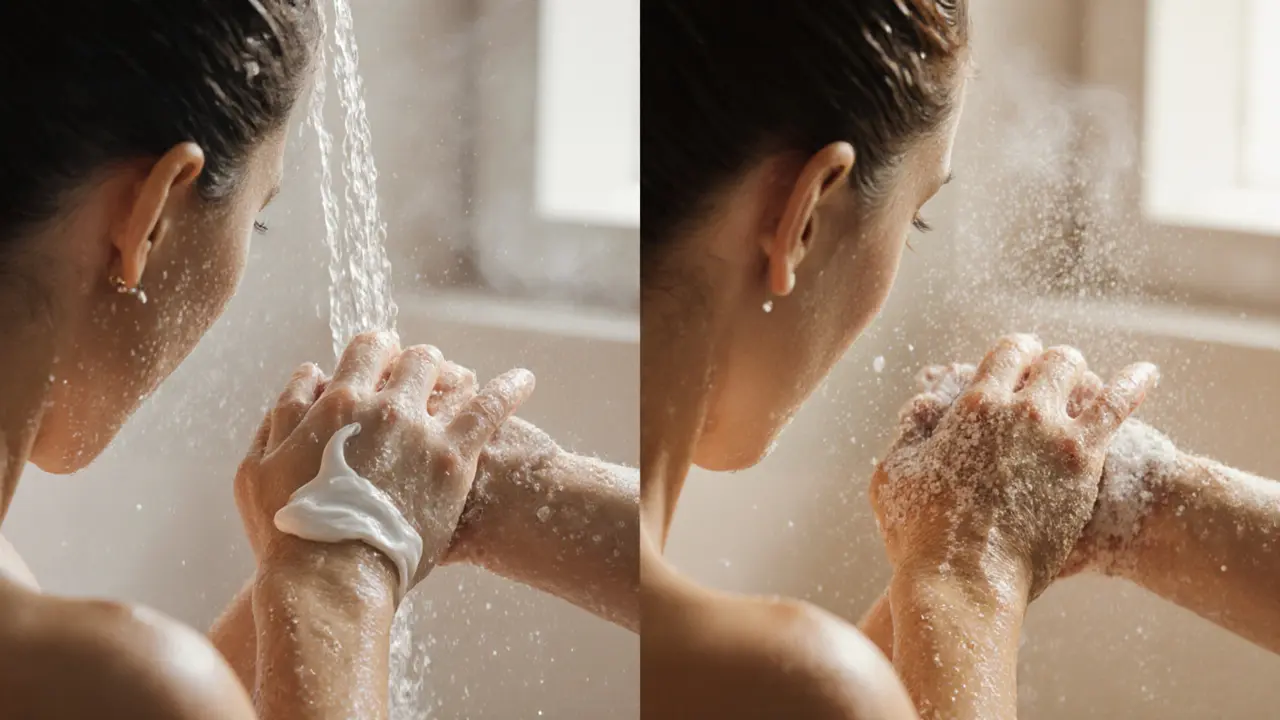
How to Apply a Body Scrub Correctly
Setting Up for Success
Clear a safe space in the bathroom, lay a towel, and have your scrub within arm’s reach. A non‑slip mat helps prevent accidental falls when the floor gets slick.
Choosing the Right Tools
The only tool you truly need is your hands, but a soft silicone brush can enhance coverage without being harsh. Pick a product that matches your skin type: sugar‑based for sensitive, salt‑based for oilier or calloused skin.
Step‑by‑Step Guide
- Prep the skin: Turn the shower to a comfortable warm temperature and let steam fill the space for 2-3 minutes.
- Apply the scrub: If you’re using the wet‑skin method, splash a little water on the area first, then spread the product. For the dry‑skin method, keep the skin just damp-no running water needed.
- Massage: Use gentle circular motions, applying just enough pressure to feel the particles working but not so much that you irritate the skin.
- Rinse: Allow warm water to wash away the grit. If you used a dry‑skin approach, you can finish with a quick spray bottle mist and then wipe with a damp cloth.
- Hydrate: Seal the moisture with a light body lotion or oil. This step is crucial because exfoliation can temporarily leave the skin a bit thirsty.
Tips for Beginners
- Start with once a week; increase to twice if your skin tolerates it.
- Never use a scrub on broken or inflamed skin.
- Keep the pressure light-your skin should feel refreshed, not raw.
Safety and Ethical Considerations
Choosing Qualified Products
Look for scrubs formulated by reputable brands that disclose ingredient sources. Natural exfoliants should be sustainably harvested to avoid ecological damage.
Safety Practices
| Practice | Purpose | Example |
|---|---|---|
| Patch test | Avoid allergic reactions | Apply a pea‑size amount on inner forearm for 24h |
| Use gentle pressure | Prevent micro‑tears | Massage in circles, not scrubbing |
| Rinse thoroughly | Remove abrasive particles | Warm water rinse for 30seconds |
Setting Boundaries
If you’re at a spa, communicate your comfort level-some therapists use firm pressure, others keep it light. In a home routine, respect how your skin feels and stop if you notice redness.
Contraindications or Risks
People with active skin infections, severe eczema, or recent laser treatments should skip physical scrubs until cleared by a professional. The friction could worsen irritation.
Enhancing Your Scrub Experience
Adding Complementary Practices
Follow your scrub with a short session of dry‑brushing or a brief yoga stretch. Both actions keep the circulation boost going and extend the relaxed feeling.
Solo vs. Partner Sessions
Doing it alone gives you full control over pressure and timing. With a partner, you can reach hard‑to‑reach spots like the back-just make sure both use clean hands.
Using Tools or Props
A silicone exfoliation glove adds a uniform texture and is easy to clean. For a spa‑like vibe, place a scented candle nearby; the aroma enhances the sensory experience.
Consistency for Long‑Term Gains
Regular exfoliation (once or twice weekly) keeps skin renewal steady. Over‑scrubbing can strip natural oils, so stick to the schedule that matches your skin’s tolerance.
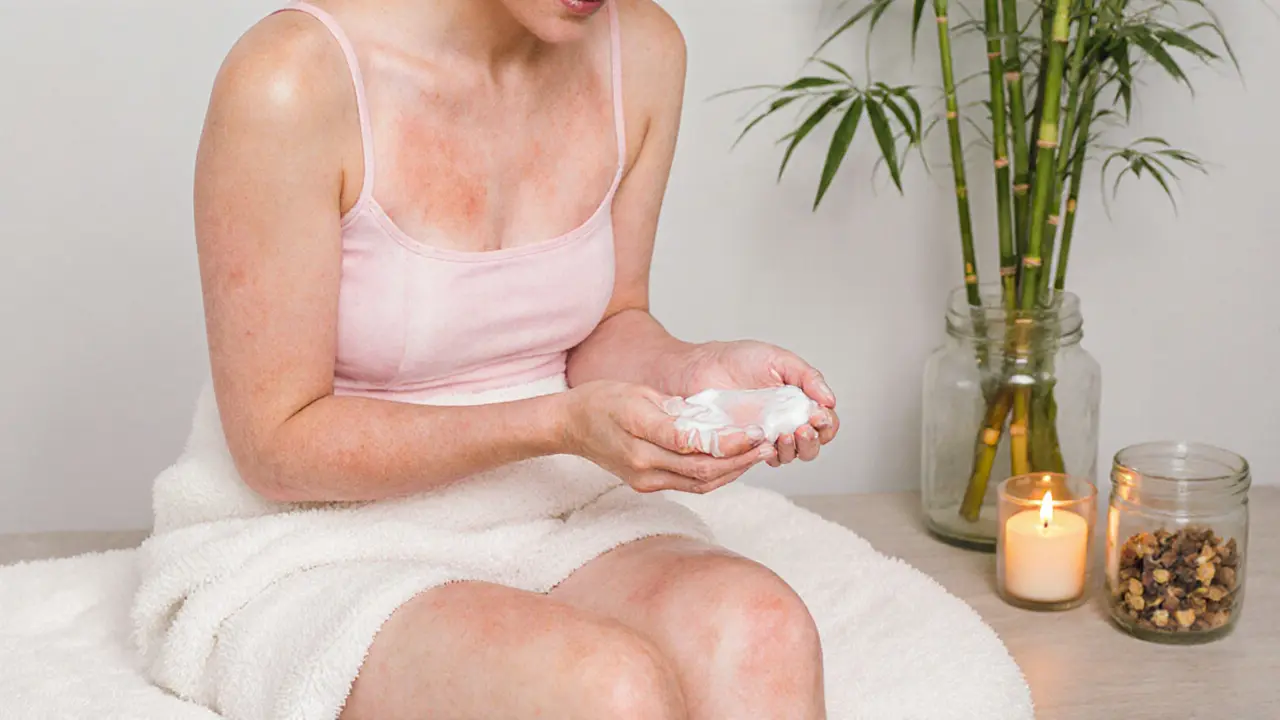
Finding Resources or Experts
Researching Qualified Professionals
When choosing a spa in Dubai, check that therapists hold certifications from recognized bodies like the International Spa Association. Reviews that mention hygiene and product quality are good indicators.
Online Guides and Communities
Websites such as the American Academy of Dermatology provide solid guidelines on exfoliation frequency and product selection. Forums like Reddit’s r/SkincareAddiction also share real‑world experiences that can help you pick the right scrub.
Legal or Cultural Considerations
In the UAE, certain cosmetic ingredients are regulated for safety. Ensure any imported scrub complies with the Emirates Authority for Standardization and Metrology (ESMA) standards.
Resources for Continued Learning
- "The Skincare Bible" by Dr. Anjali Mahto - a deep dive into exfoliation science.
- Online course: "Professional Body Treatments" on Coursera - covers technique and product knowledge.
- Video tutorials from licensed estheticians on YouTube - look for channels with verified credentials.
FAQ: Common Questions About Body Scrub Use
Should I scrub on wet skin or dry skin?
Both methods work, but they serve slightly different goals. Wet‑skin application lets the scrub glide more easily, reducing friction and is ideal for sensitive skin. Dry‑skin scrubbing creates a bit more abrasion, which can be better for very thick calluses. Start with the wet method; if you need extra polish, try the dry approach on stubborn spots.
How often should I use a body scrub?
For most skin types, once a week is enough. If you have normal to oily skin and no irritation, twice weekly is fine. Sensitive or dry skin should stay at one session per week or even every two weeks.
Can I use a body scrub if I have eczema?
Generally, it’s best to avoid physical scrubs during flare‑ups because the friction can worsen irritation. Once the skin is calm, a very gentle, sugar‑based scrub applied on barely damp skin may be tolerated, but always check with a dermatologist first.
What’s the difference between a sugar scrub and a salt scrub?
Sugar granules are smaller and dissolve in water, making them milder-great for sensitive skin. Salt crystals are larger and retain mineral benefits like magnesium, which can be soothing for muscle tension but may feel harsher on delicate areas.
Do I need to moisturize after scrubbing?
Absolutely. Exfoliation removes the top layer of dead cells, leaving skin temporarily thirsty. Applying a lightweight lotion or body oil restores hydration and locks in the smoothness you just created.
Conclusion: Why Trying Both Methods Is Worth It
Whether you go for a gentle wet‑skin ritual or opt for a more intense dry‑skin scrub, the key is listening to your body and staying consistent. Both techniques can boost texture, circulation, and confidence when used correctly.
A Path to Smoother Skin
By incorporating the right scrub, timing, and after‑care, you set yourself up for a healthier skin barrier and a more radiant appearance.
Try It Mindfully
Start with a small amount, respect your skin’s signals, and don’t skip the moisturizer. If you’re unsure, book a session with a certified esthetician in Dubai to get personalized advice.
Share Your Journey
Have you tried the wet or dry method? Drop a comment below, or follow the blog for more skincare tips. Your experience could help the next reader decide which path to take.
Disclaimer: Some links may be affiliate links, but all recommendations are based on research and quality.



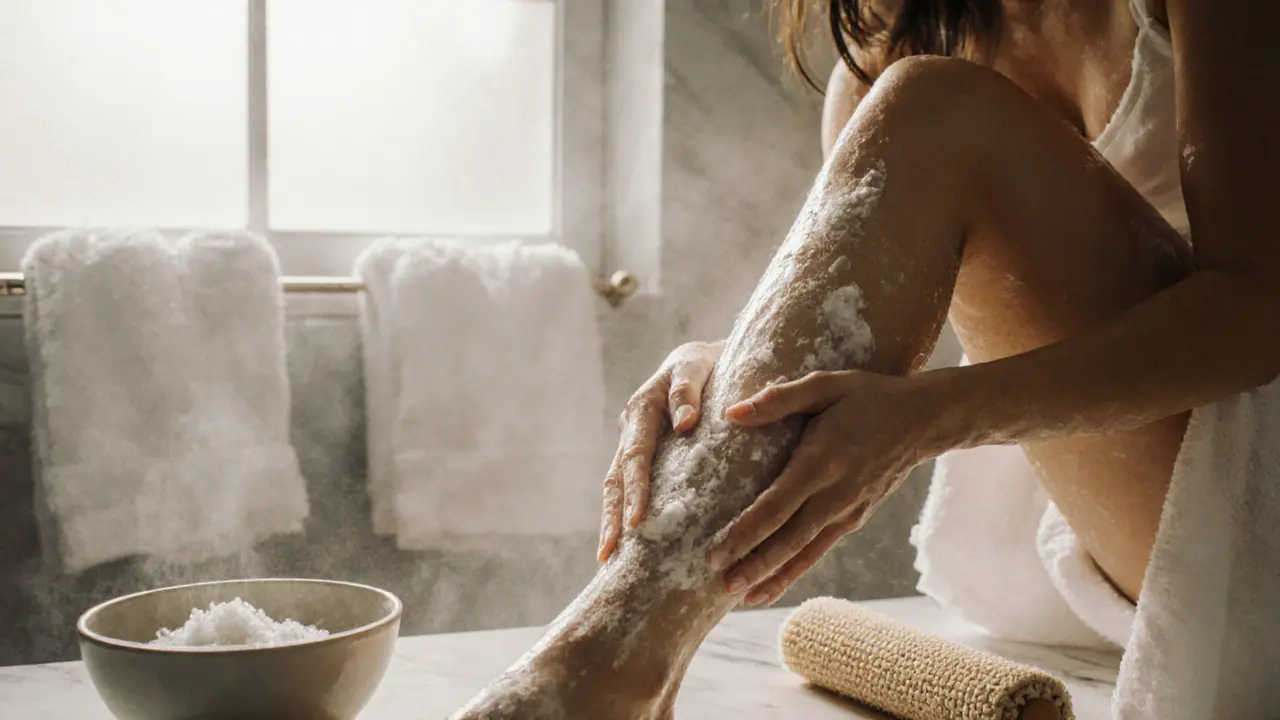

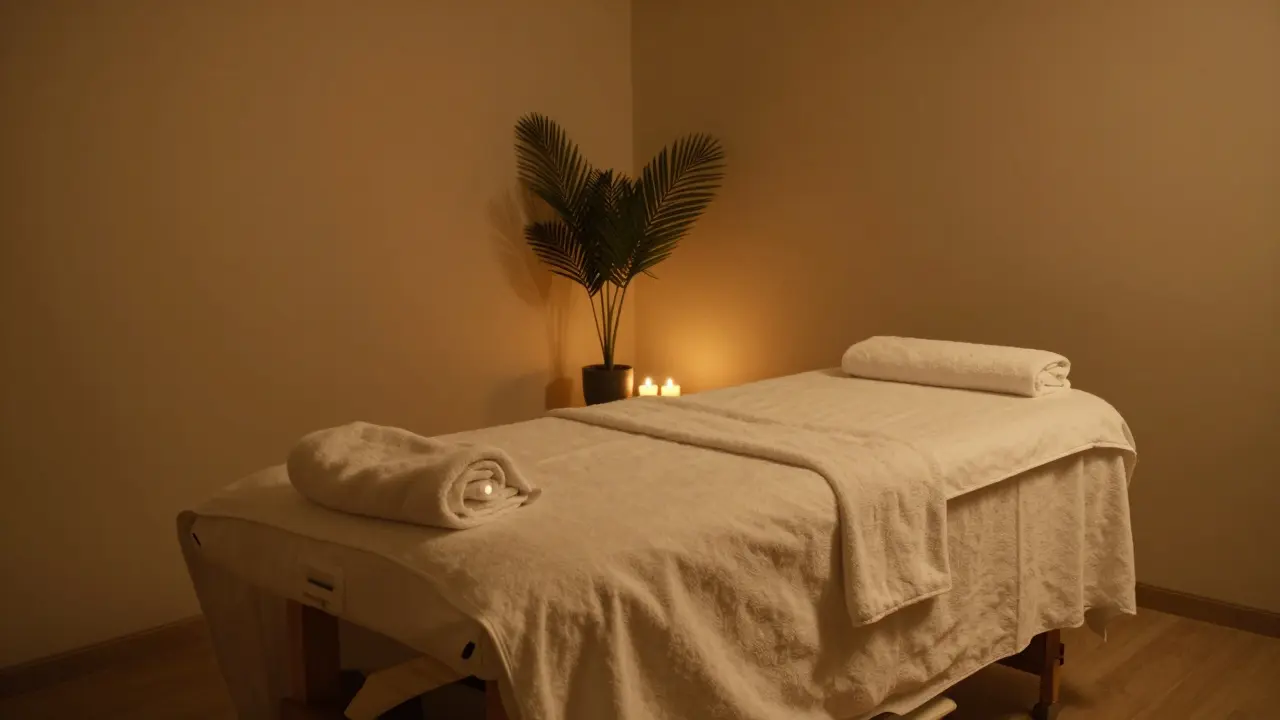
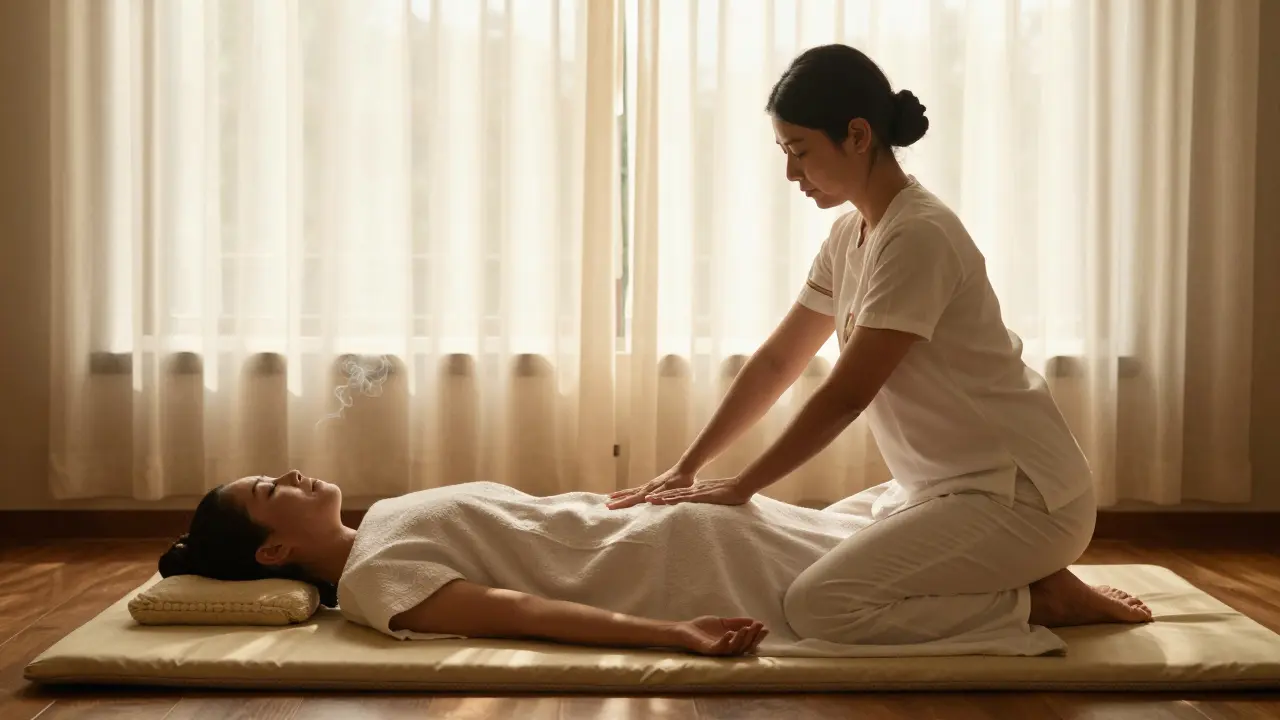


Susan Baker
October 10, 2025 AT 16:36From a dermatological perspective, the mechanophysical interaction between exfoliative particulates and the stratum corneum can be quantified using shear modulus differentials, which elucidates why granule morphology influences tolerability. When a glycolic acid derivative is absent, the abrasive index becomes the primary determinant of epidermal desquamation velocity. Empirical studies have demonstrated that sugar-based matrices, owing to their hygroscopic dissolution kinetics, produce a subtler abrasive force compared to crystalline sodium chloride, which retains its structural integrity under aqueous conditions. Moreover, the presence of oleic acid in carrier oils modulates lipid bilayer fluidity, thereby enhancing post-exfoliation transepidermal water loss restitution. The thermodynamic profile of wet versus dry application also warrants consideration; a wet substrate reduces coefficient of friction, mitigating microtrauma while facilitating particle suspension. Conversely, a minimally hydrated surface amplifies mechanical shear, which some clinicians prescribe for hyperkeratotic regions. It is imperative to calibrate the frequency of abrasive cycles to align with the epidermal turnover rate, typically 28 days for average skin phenotypes. Overzealous exfoliation can disrupt the acid mantle, precipitating dysbiosis and heightened susceptibility to opportunistic pathogens. In practice, a protocol that alternates between wet and dry modalities may synergistically balance desquamation efficiency with barrier preservation. Clinical anecdote suggests that integrating a silicone-based glove introduces uniform pressure distribution, reducing localized stress concentrations. Nutraceutical adjuncts, such as topical vitamin C, can further potentiate collagen synthesis post-scrub, as oxidative stress markers decline. Nonetheless, patient-specific variables – including melanin index, sebaceous output, and comorbid dermatologic conditions – must inform bespoke exfoliation regimens. Regulatory frameworks in jurisdictions like the UAE mandate ingredient traceability, ensuring that reclaimed marine salts meet ISO 9001 standards for purity. Lastly, empirical observation underscores the psychosomatic benefit of aromatic terpene‑infused scrubs, which activate limbic pathways associated with relaxation, thereby enhancing overall compliance. In summary, the choice between wet and dry skin application is not dichotomous but rather contingent upon a confluence of biophysical, biochemical, and psychosocial parameters.
diana c
October 10, 2025 AT 17:26Thinking about the interplay of mind and skin, it feels like the ritual itself can become a meditation, a pause that invites awareness of the present moment. The gentle circular motions echo the cyclical nature of thoughts, and the scent acts as an olfactory anchor. While the science offers clarity, the personal experience adds a layer of meaning that transcends pure function.
Shelley Ploos
October 11, 2025 AT 18:26Everyone's skin story is unique, and it's wonderful to see such detailed guidance that respects those differences. For those new to exfoliation, starting with a mild sugar scrub on damp skin can be a gentle introduction. Remember to listen to your skin and adjust frequency as needed.
Haseena Budhan
October 11, 2025 AT 18:43i think wet scrub feels sooo smoother.
Bing Lu
October 12, 2025 AT 22:13They hide chemicals in scrubs 😒
gaia quinn
October 12, 2025 AT 23:36Oh, the conspiratorial allure of everyday hygiene products is simply irresistible, especially when you consider the shadowy conglomerates that allegedly engineer micro‑abrasives to subtly erode our self‑esteem. One could argue that the very act of massaging a scented paste onto one's epidermis is a covert indoctrination technique, conditioning us to associate pleasure with consumption. The lubricating oils, meticulously sourced from undisclosed plantations, might be laced with nano‑particles designed to monitor dermal pH fluctuations. Meanwhile, the marketing language, dripping with euphemisms like “luxurious” and “spa‑like,” serves as a linguistic camouflage for deeper surveillance agendas. If you pause to contemplate the supply chain, a labyrinth of offshore factories and anonymous distributors emerges, each a potential node in a grander scheme of data extraction. The humble scrub, then, becomes a Trojan horse, delivering not just exfoliation but also a subtle imprint of corporate will upon our skin. It’s almost poetic how the very act of seeking smoothness aligns with the pursuit of conformity, a delicate dance choreographed by unseen hands. Of course, any genuine user will dismiss these musings as paranoia, preferring the immediate glow over abstract dystopia. Yet the lingering question remains: are we truly in control of our own dermal destiny, or merely participants in a pre‑fabricated narrative? The answer, as always, lies somewhere between fragrant foam and silent servers.
BETHI REDDY
October 14, 2025 AT 02:00From a scholarly standpoint, the dichotomy between wet and dry exfoliation merits a nuanced appraisal, particularly in the context of dermatological best practices. The literature suggests that substrate hydration modulates abrasive efficacy, a principle that aligns with established biomechanical models. Accordingly, practitioners should calibrate their recommendations based on individual cutaneous characteristics and tolerability thresholds.